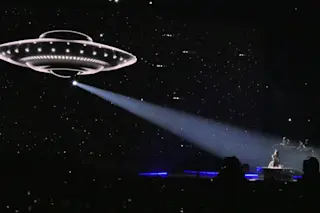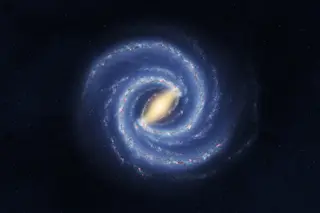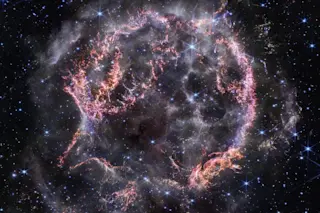In the beginning--or to be precise, a trillionth of a trillionth of a trillionth of a second after the Big Bang--the universe was a seething, unimaginably hot ball of energy. The forces that we know-- gravity, electromagnetism, and the strong and weak forces that govern atoms--were still joined as one. But in an instant, this sea of energy changed. Much as water abruptly turns to ice, the universe crossed a temperature threshold and the universal force fragmented.
As unlikely as it seems, a group of Finnish physicists claims to have re-created these primordial conditions in the lab. They believe they have simulated important features of the newborn universe in a flask of liquid helium chilled to near absolute zero, and their experiments, they say, bear out the predictions of a controversial theory.
As the universe cooled, according to this theory, defects in the fabric of space-time appeared, just as water ...














